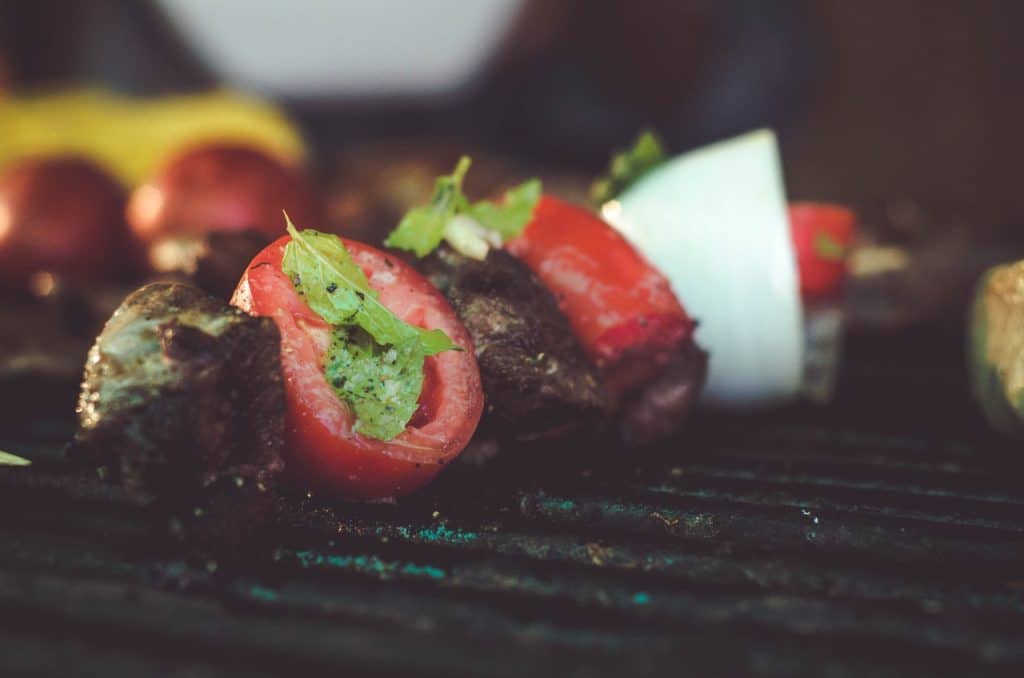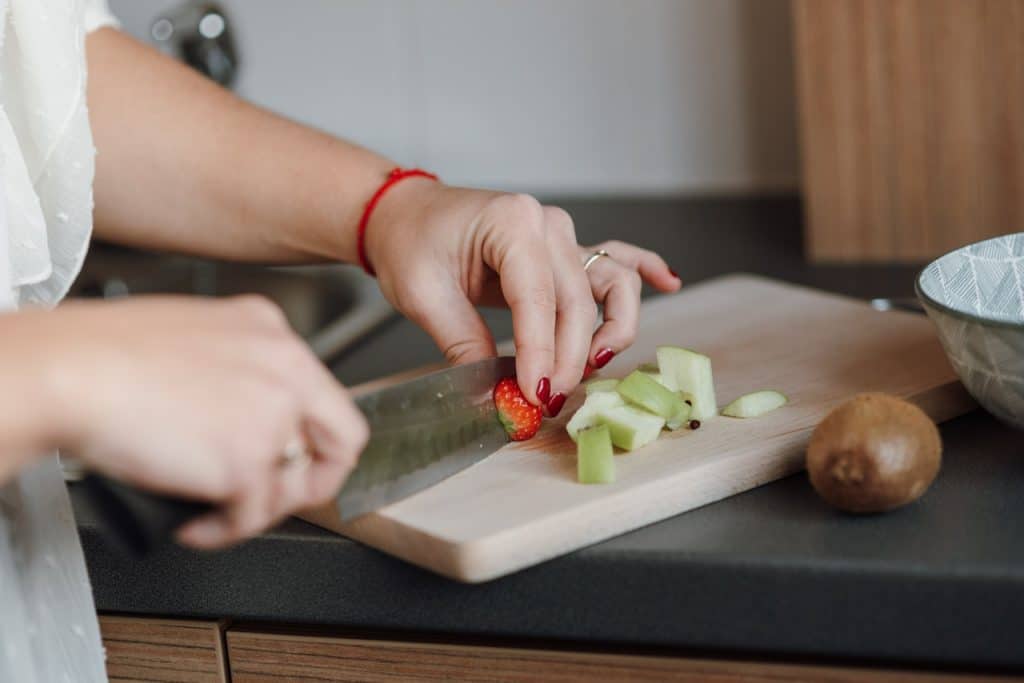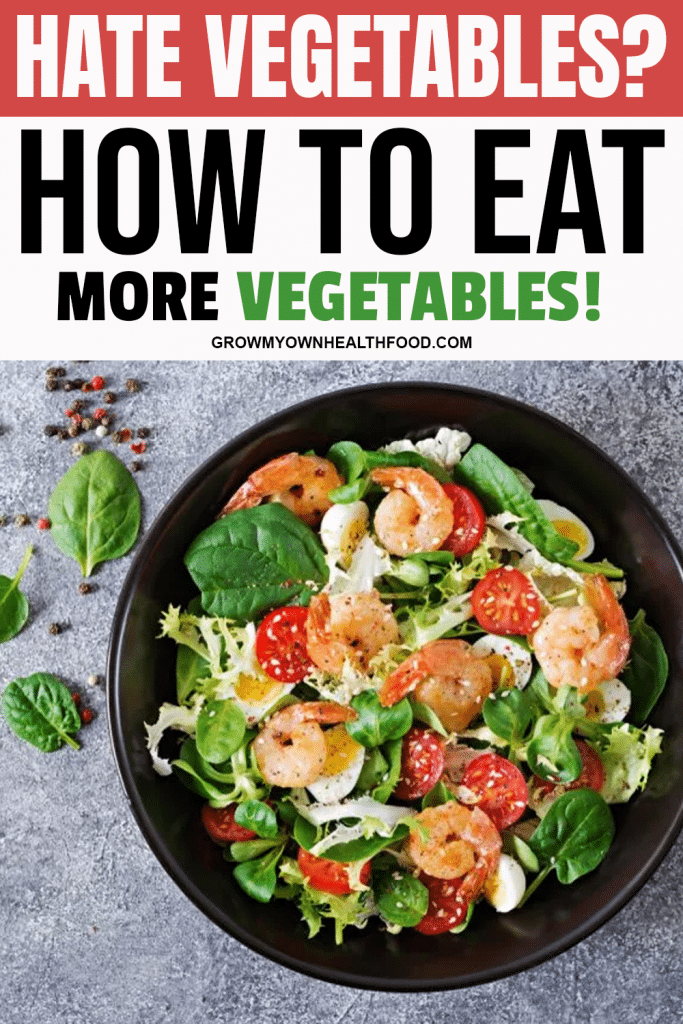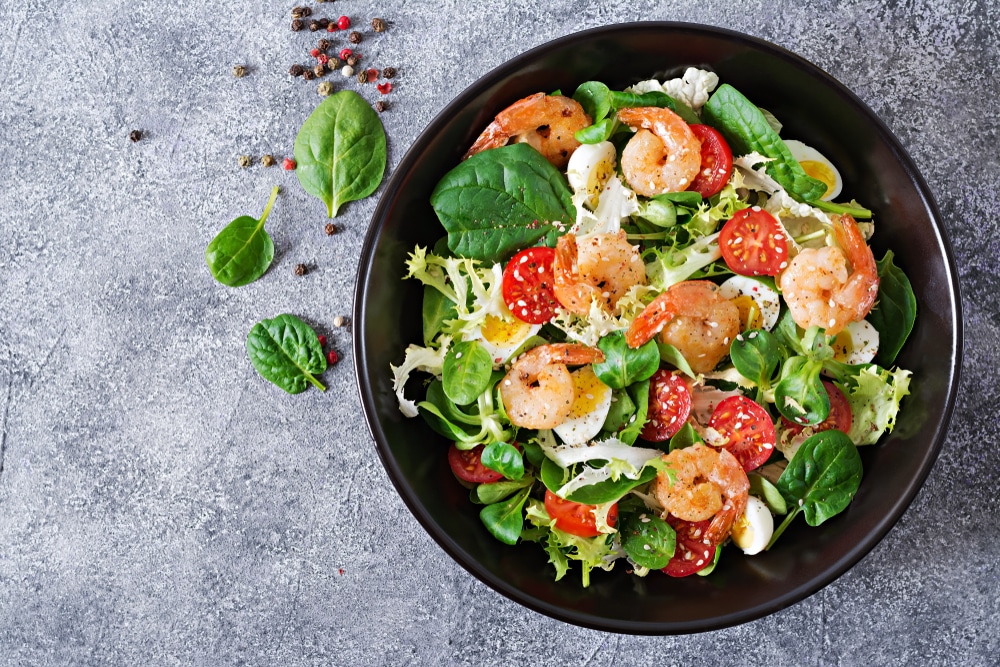Most of us are raised “meat and potatoes” people. If we see something green on our plate, it better be a bit of scallion that fell off our loaded baked potatoes or a wayward piece of parsley from our steak garnish. The fact that side salads are an “upcharge” at most restaurants gave us the perfect out. Without that excuse, we’d have to ask for eight sides of ranch dressing to mask the so-called taste of the flavorless pile of sadness we’d receive. I never thought to myself, I should eat more vegetables.
Unfortunately, there comes a point when you can no longer ignore the effects of high fat, high carb, animal-based diet. So, you might start to introduce some cheesy broccoli, butter-sopped green beans, or even a stuffed pepper or two into your weekly dinner schedule. However, if you need to eat a salad, it’s going to be covered in something so oily and high fat that it negates any positive effects those greens might have.
The point is: most people don’t eat veggies. When we do, we eat them in a very unhealthy way.
I Hate Vegetables – (Or I Used To)
Yep, I was one of these guys. My entire youth and early adult life, I spent thinking that veggies were gross. I thought of “salads” as bland iceberg lettuce, pungent red onions, and flavorless shreds of bright orange carrot. The only thing that could save that plate of platitudinous was a big old helping of bright white, sugary goop.
But I was wrong.
As I grew up, began seriously dating, and found myself emerged in the budding “foodie scene,” I found out that my interpretation of veggies and salads was way off. I was judging everything based on the “bare minimum” salads you get from buffet lines in cafeterias or that are served to you in low-rent steak houses by waitresses who still smell like their cigarette break.
Salads as a Meal

However, I was soon introduced to REAL salads made by people who actually cared what they tasted like. From homemade vinaigrettes and fresh ingredients to leafy greens that actually had flavor, my entire culinary world changed. I started making salads at home. I started – gasp – eating salads when dining out. Not as a side, mind you – as my meal!
In this article, I want to pass on what brought about this shift in my eating habits. Specifically, I want to offer up some tips on how you can change your salad game, eat healthier, and introduce yourself to a whole new world of meal ideas.
Tips on Easy Ways to Eat More Vegetables
Tip #1: Toss Your Salad!
I literally cannot stress this one enough, as virtually nobody takes this very important step toward improving their salads. You see, since we think of all the salad’s flavor as coming from the dressing, we tend to make salads “dry” and then allow folks to dress them as they prefer. However, this often leads to us drenching our ingredients to the point that they become mush. The real way to do a salad is to wash and separate the greens, then toss them in the dressing of your choice. This will keep them from becoming oversaturated, and allow the flavors and textures of the rest of the ingredients to come out. This makes for a more interesting – and more delicious – experience.
Tip #2: Roast or Grill the Vegetables

The more squeamish veggie eaters – the ones who like to refer to salads as “rabbit food” – are typically much more comfortable with roasted or grilled veggies than raw. So why not make this a staple of your salad construction process? In fact, it’s easier than you think. I like to just take mass amounts of veggies and put them on the grill or in the oven earlier in the week. After they’re done, I pop them in the fridge and pull them out whenever I need to make a quick salad. Trust me, you – and your guests – will be surprised by the difference in texture and taste. You can even warm them up in the microwave to make your salad eat more like a meal.
Here are a couple of essentials for making this task easier:
- Locks in juices and flavors: Sear at 450 degrees or use adjustable temperature dial to grill at lower heat for optimal grilling results
- Enjoy grilling all year long: This indoor grill with hood has a high searing heat that locks in juices and flavors, and lid closes to give you signature grill marks; Serves up to 6 with 118 square inch grilling surface
- Easy to clean: Indoor grill hood, plate, and extra-large drip tray are all removable and dishwasher safe
- Less mess: Extra-large drip tray catches juices so they dont spill on your counter and its dishwasher safe for easy cleaning
- Power and preheat lights: Eliminate guesswork while using your electric grill
- Cooks more than steaks, BBQ and burgers: Grill chicken, fish, pizza, vegetables, fruit and more. Also great for Paleo and Keto diets.
- Powerful 1200 watts and 1 year limited warranty.
- Dimensions: 12.4 inches L x 16.7 inches W x 6.8 inches H
Prices pulled from the Amazon Product Advertising API on:
Product prices and availability are accurate as of the date/time indicated and are subject to change. Any price and availability information displayed on [relevant Amazon Site(s), as applicable] at the time of purchase will apply to the purchase of this product.
- DURABLE BAKEWARE: The sheet pan set has heavy gauge steel construction and rolled-rim edges; the perforated crisping insert is ideal for oven roasting, toasting and more
- NONSTICK BAKING: Long-lasting nonstick found throughout baking pan provides great food release with quick cleanup
- HANDLES THE HEAT: This versatile cookie sheet set is oven safe to 450 degrees Fahrenheit, colorful silicone handle grips provide comfortable handhold even with large oven mitts and potholders
- EASY TO CLEAN: The premium nonstick found on these cookie sheets set is easily hand washed for your baking and cleaning convenience
- FEEL GOOD BAKING: A portion of proceeds goes to Yum-o!, Rachael’s nonprofit organization that helps kids and their parents develop healthy relationships with food
- QUALITY ASSURANCE GUARAN
Prices pulled from the Amazon Product Advertising API on:
Product prices and availability are accurate as of the date/time indicated and are subject to change. Any price and availability information displayed on [relevant Amazon Site(s), as applicable] at the time of purchase will apply to the purchase of this product.
Tip #3: Try Adding Fruit to Salad

If you’re addicted to those high fructose corn syrup salad dressings and find yourselves eschewing the healthier (and tastier, in my opinion) vinaigrettes, you should try introducing some fruit to your salads. This is a great way to add a touch of sweetness and some familiar flavors to the mix. From mandarin oranges and pineapple to strawberries, blueberries, and cherries, you’ll be amazed at what a difference a little fruit can make, and will help balance the acidity and tartness of a good, light dressing.
Tip #4: Yes, You Can Add Carbs to Salads
If you’ve never had a bit of rice or quinoa on your salad, you’ve never truly lived (culinarily speaking). Though it might seem strange, just think of how many salads come with garlicy, crunchy, croutons on top? Of course, that’s also an option – you’ll just want to bake them or toast them at home to avoid all the fry oil and preservatives that come in the packaged stuff. Whatever you decide, carbs are a very accessible part of the food pyramid and can help make your salads far more palatable for the average guy.
Tip #5: Choose Salad Toppings Wisely

We already discussed how bad those store-bought croutons are. Bacon bits and other so called “salad enhancers” are even worse. In fact, they might not technically be food. But since I can’t blame you for wanting a bit of crunch in your mélange of veggies, I’ll let you in on some great alternatives. My favorite is sunflower seeds. However, soybeans, nuts, walnuts, pecans, pomegranate seeds, fresh (real) bacon, and even trail mix are also great. Not only will they make your salad infinitely more interesting, but they’ll add some much-needed vitamins and protein to the whole experience. However, the best thing about doing this is that it helps your salad eat more like a meal. This means you won’t be snacking on oil-filled potato chips an hour after dinner.
Tip #6: Pay Attention to Salad Seasonings
Veggies are rarely perfect right out of the ground. Heck, even the most high-quality steaks in the world get a hit of salt and pepper before they go on the grill! The point is: don’t ignore seasoning when it comes time to get your salad ready for the table. I recommend a squirt of lemon or lime juice to add a nice sour contrast to the rest of the dish. Or topping the whole ensemble with oregano, basil, and fresh cracked pepper. You’ll be literally shocked by what a difference this can make in the entire experience.
Salad Supreme Seasoning
Here is a salad seasoning I highly can’t recommend enough. Salad Supreme Seasoning has no artificial flavors or MSG. Not only is great on your salads, but you can also sprinkle it on your vegetables and even chicken.
- Colorful garnish with lively flavor, add a savory punch to salads, pasta or chicken
- Fun fact: This snack doubles as a tasty treat for your next salad
- No artificial flavors
- No MSG added
- Usage tip: Great on chicken, salads and vegetab
Prices pulled from the Amazon Product Advertising API on:
Product prices and availability are accurate as of the date/time indicated and are subject to change. Any price and availability information displayed on [relevant Amazon Site(s), as applicable] at the time of purchase will apply to the purchase of this product.
Eat More Vegetables – Conclusion
I spent most of my life being skeptical about salads. Never thought about eating more vegetables. However, the past few years have opened my eyes (and my heart) to a world of healthy, filling dishes that are actually good for me. Where I used to think that eating romaine was akin to becoming a vegetarian, I now grow spinach, kale, watercress, and arugula all over my garden. So, if you think salads are gross, but think your budding belly is grosser, follow the eating more vegetable solutions on this list. I promise you’ll become a salad eater in no time. Pass the balsamic!







